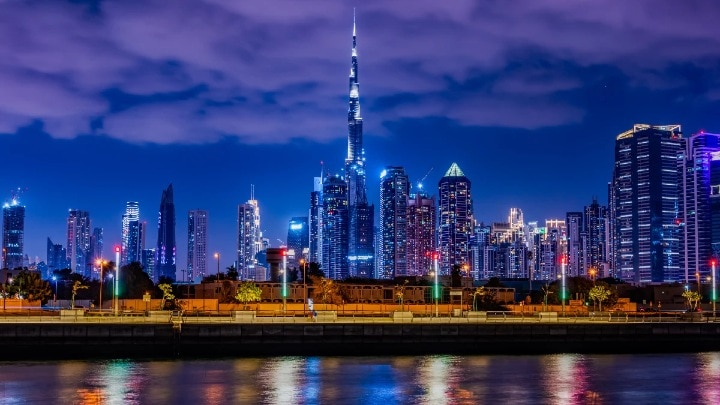6th July, 2022
Five approaches municipalities can take to combat fossil fuel overdependency and soaring energy bills
Public and consumer bills are rocketing across Europe, putting intense pressure on workplaces and households and plunging many into energy poverty. At the same time, recent geopolitical events highlight the dangers of reliance on critical resources supplied by a single nation.
Altogether, Europe meets around 25% of its energy demands by importing Russian gas. In 2021 alone, the European Union imported 155 billion cubic meters of Russian gas, accounting for 45% of all its gas imports. Now that boycotts have been called across the continent, energy prices are soaring.
Clearly, the region requires an energy revolution. Municipalities can lead the charge with an integrated approach that incorporates the following five approaches.
To achieve large-scale energy transitions, municipalities require sufficient budgets. To that end, the European Commission has pledged €1 trillion in sustainable investments via the NextGenerationEU temporary recovery instrument. EU member states must invest 37% of the instrument’s €672.5 billion Recovery and Resilience Facility in support of climate objectives.
Making sure that climate funding flows directly to municipalities is key to swiftly and effectively implementing solutions to combat the energy crisis. Financial instruments and innovative business models, such as product-as-a-service offerings, can bring additional environmental and economic benefits forward and help tackle roadblocks due to problematic balance sheets and public debt.
Cities account for 70% of all CO2 emissions in the EU. The EU aims to achieve deep decarbonization of key sectors under its 2050 long-term strategy, an ambition which is at the heart of the EU Green Deal, the union’s aggressive sustainability roadmap.
At a minimum, decarbonization measures should involve energy efficiency improvements, accelerated electrification efforts, and additional mechanisms to offset unavoidable emissions, including reforestation.
Accelerating the deployment of wind and solar is one of the ten points mentioned by the International Energy Agency’s (IEA) report on reducing Europe’s reliance on Russian gas.
As well as utility-scale projects contributing directly to national power grids, municipalities can encourage and incentivize consumers to deploy rooftop solar photovoltaics through short-term financing mechanisms. A short-term grant program covering 20% of installation costs could double the pace of investment in solar, at a total cost of around €3 billion. Such a program could potentially increase annual output from rooftop solar PV systems by up to 15 TWh—energy that will no longer have to be generated by traditional carbon-intensive energy-producing means.
Energy-efficient heating and cooling is a powerful tool to drive down emissions in the built environment, and offers EU municipalities the opportunity to secure clean energy transitions.
Only 1% of the union’s buildings undergo energy efficiency renovations per year, a rate that needs to increase to 3% as required by the Renovation Wave initiative, one of the six main pillars of the EU Green Deal. With an estimated 34 million Europeans unable to afford to heat their homes adequately, improving HVAC systems is crucial on multiple levels.
Heat pumps are an energy-efficient and economically reasonable way to heat homes, replacing fossil-fuel powered boilers, but may take some time to scale up. In the short term, municipalities can roll out smart thermostats and ensure that buildings undergo annual maintenance checks of less efficient boilers.
One of the easiest and most inexpensive steps to tackling the energy crisis is to adopt connected LED lighting systems. Managed LED lighting systems can reduce lighting-related energy costs by up to 80%, a far-reaching benefit considering that light accounts for 12% of the world’s electricity consumption.

To give one example of the potential impact, upgrading only 20% of all existing conventional EU light points to LED in public installations (education, municipal buildings, and roads and streets) could generate yearly savings of approximately 9.7 TWh, equivalent to the annual electricity consumption of 2.7 million households.
Managed LED lighting retrofits have the potential to reduce the global carbon footprint by 553 million tons per year. LED and connected lighting also afford many other important benefits, including remote maintenance, occupancy sensing, and UV-C disinfection.
Harry Verhaar
Head of Global Public & Government Affairs at Signify
Signify (Euronext: LIGHT) is the world leader in lighting for professionals, consumers and the Internet of Things. Our Philips products, Interact systems and data-enabled services, deliver business value and transform life in homes, buildings and public spaces. In 2023, we had sales of EUR 6.7 billion, approximately 32,000 employees and a presence in over 70 countries. We unlock the extraordinary potential of light for brighter lives and a better world. We have been in the Dow Jones Sustainability World Index since our IPO for seven consecutive years and have achieved the EcoVadis Platinum rating for four consecutive years, placing Signify in the top one percent of companies assessed. News from Signify can be found in the Newsroom, on X, LinkedIn and Instagram. Information for investors is located on the Investor Relations page.


December 17, 2024
Transforming Dubai’s iconic buildings with connected lighting from Signify